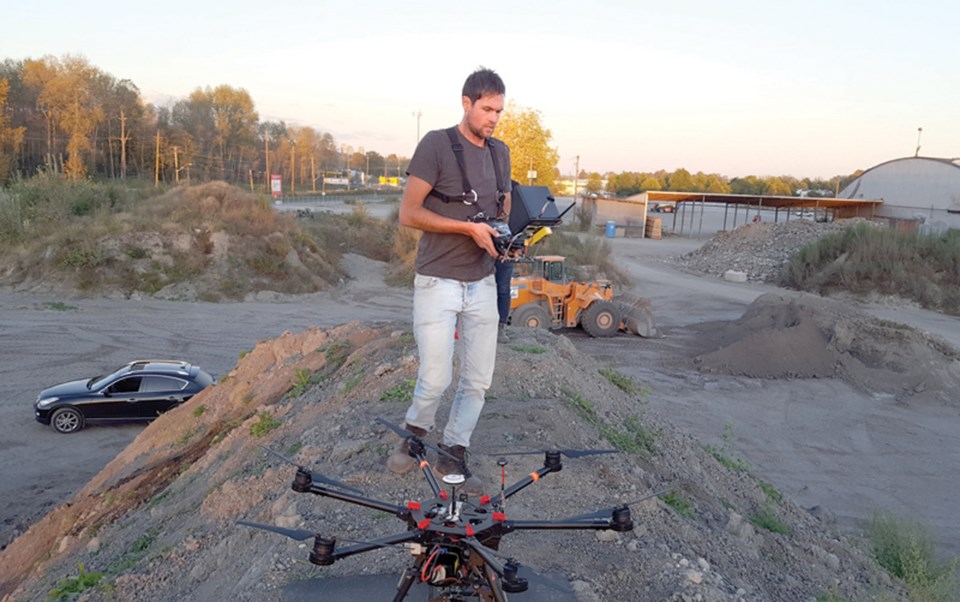Hey, drone, get off of my cloud.
That’s the message recreational drone operators on the North Shore are getting from Transport Canada’s strict new rules on unmanned aerial vehicles.
Citing heightened danger posed by high fliers, Minister of Transport Marc Garneau introduced regulations that ban recreational drone flights within nine kilometres of any airport, heliport, or aerodrome (including harbours used by float planes) March 16.
The new rules seemed to come “out of the blue,” according to drone operator and Mulgrave secondary student Matthew Chasmar.
Proximity to Vancouver Harbour effectively closes the sky from shoreline to treeline between McKechnie Park in West Vancouver and the Seymour Golf and Country Club. The Grouse Mountain helipad also excludes a portion of the backcountry.
Besides the airport restriction, the rules also ground drones within 75 metres of buildings, vehicles or people – a measure Chasmar found “potentially excessive.”
“Many school fields, many soccer fields are not large enough that they would meet that requirement,” he said.
The recent owner of a Phantom 3 drone, Chasmar suggested dropping that distance to 50 metres. He also disputed the perception many drone owners are reckless, stating many of his friends have done “due diligence.”
The new rules are “overdue,” according to ING Robotic Aviation CEO Ian Glenn.
For generations the only path to the blue yonder included rigorous flight instruction.
“Now, you stop by the local Best Buy and suddenly you’ve got an aircraft in the sky,” he said.
While his company uses drones for pipeline monitoring and wind turbine inspection, Glenn said he’s noticed a sea change in the skies as operators with no aviation knowledge enjoy unfettered access to the stratosphere.
“We’ve seen (a) proliferation of folks who aren’t following the rules and therefore becoming a nuisance if not a hazard.”
There is also a psychological component to widespread drone use, according to Glenn, who cited a 2016 near collision over Lake Ontario in which a pilot took evasive action to avoid what was believed to be a drone.
“(Pilots) think they’re seeing them, and so they’re afraid and therefore they’re twitchy.”
Ideally, Glenn said he’d like to see everything that flies equipped with a transponder.
“I call it the helmet of 2017 … nobody really wants to wear one but for public safety we insist you do.”
The rules will hurt innovation and stymie “tens of thousands of responsible” drone pilots, according to Drone Manufacturers Alliance director Kara Calvert.
A DMA statement noted aviation authorities haven’t recorded a collision between a civilian drone and an aircraft.
Transport Canada investigated 125 potential infractions involving drones in 2016, more than twice as many as in 2014. Transport Canada “is not aware of any collisions” between a drone and a plane, according to Natasha Gauthier, media relations for Transport Canada.
Despite reports of collisions with drones in the United States, each investigation conducted by the Federal Aviation Authority revealed the suspected drones were birds, wires or posts, according to a February release from the FAA.
In terms of criminal charges for operators who flout the no-fly zone, there aren’t a lot of definitive answers, according to North Vancouver RCMP spokesman Cpl. Richard De Jong.
A municipality could issue a blanket ban on drones, “But how do you enforce it?” De Jong asked.
While the legal requirements are evolving alongside the technology, it still may be a challenge to track drones and catch the operator with their hands on the controls, according to De Jong.
The new rules are a gift to the skies, according to Andrew Fyfe, a pilot and photographer with West Vancouver real estate drone photography company Lofty Media.
“It’s a little nerve-wracking if you look out and see a drone,” he noted.
Lofty Media has been undercut by competitors willing to flout aviation rules, according to Fyfe. However, the newly announced $3,000 fine for drone infractions should help “weed out” unlicensed competition, according to Fyfe.
The regulations also prohibit flying above 90 metres as well as night flights.
Members of the Model Aeronautics Association of Canada will be permitted to fly drones at sanctioned events.



